Moving around busy cities is always a challenge. Doing so in a clean and environmentally friendly manner is even more challenging. Yet, this is what VeloMetro, an innovative company from Vancouver, British Columbia, is trying to do with its unique vehicle: the Veemo.
VeloMetro was founded by Kody Baker, John Stonier, Jonathan Faille, and Sean Boyd. The four met at an electric vehicle (EV) company back in 2010 and later created an EV engineering consultancy called Perkuna. Perkuna worked both to convert regular vehicles into electric vehicles and to develop innovative EV charging stations.
Deciding to focus fully on VeloMetro forced the founders to temporarily hibernate Perkuna, although many of the concepts they worked on there have found their way into the Veemo vehicle itself, including an innovative battery swapping technology. Today we speak with CEO and founder Kody Baker.
What inspired you and what was the goal when designing a vehicle like the Veemo?
Kody Baker: As founders, we were challenged by the issue of how to launch an electric vehicle (EV) for the masses. We could clearly envision a future where EVs enable us to decrease our reliance on fossil fuels, but struggled with how to make EVs financially and functionally accessible to everyone.
The first “Aha!” moment struck in early 2013, when we saw the success of one-way carsharing networks and realized this would be an excellent business model to get many more people to use EVs at an affordable rate as opposed to purchasing one outright. The second “Aha!” moment struck when we realized – around April 2013 – that we could build the comforts of a car into an enclosed trike, while staying within the definition of an electric bike. This would open up EV technology to an even greater number of people and allow a faster and less costly development timeline. We could tackle the charging issues EV-based carsharing networks face by creating the vehicle from the ground up to use quick battery swapping technology, eliminating the need for our members to find a place to charge and reducing downtime. Once we put these two “Aha!” moments together, we launched VeloMetro on December 30, 2013 and hit the drawing board.
We’ve succeeded in designing, building and testing our technology, but now is an exciting time for us as we seek to validate our business via our first pilot fleet of Veemo velomobiles at the University of British Columbia. Once we prove that people love riding with Veemo, we aim to leverage that success to launch our first commercial fleet into the City of Vancouver.
 In the Photo: A couple of VeloMetro’s Veemos. Photo Credit: VeloMetro.
In the Photo: A couple of VeloMetro’s Veemos. Photo Credit: VeloMetro.
Can you share with us what you think are the most important features of Veemo?
KB: The most important features are:
- The experience
We’re very proud of the Veemo experience. Many people mention they feel “superhuman” when the electric-assist kicks in! Combining that feeling with car-like comforts and bicycle functionality has made for many memorable first rides with Veemo. People especially love the ample storage, coffee cup holder, navigation system, comfortable seat, heated grips, and windshield wiper!
- The sharing platform
Veemo velomobiles were designed specifically for sharing. Anyone who joins Veemo can rent a velomobile by the minute. Members can find, reserve, and unlock velomobiles through our Veemo app. All the velomobiles are connected to our sharing system, where we can manage the fleet through our custom platform.
- The data
We have a host of sensors on each vehicle that collect data to monitor the safety and security of our riders and vehicles. This data will also provide rich insight for cities and campuses with regard to cycling trends. The analysed data we generate from Veemo will grow in value as we scale up Veemo in cities around the world.
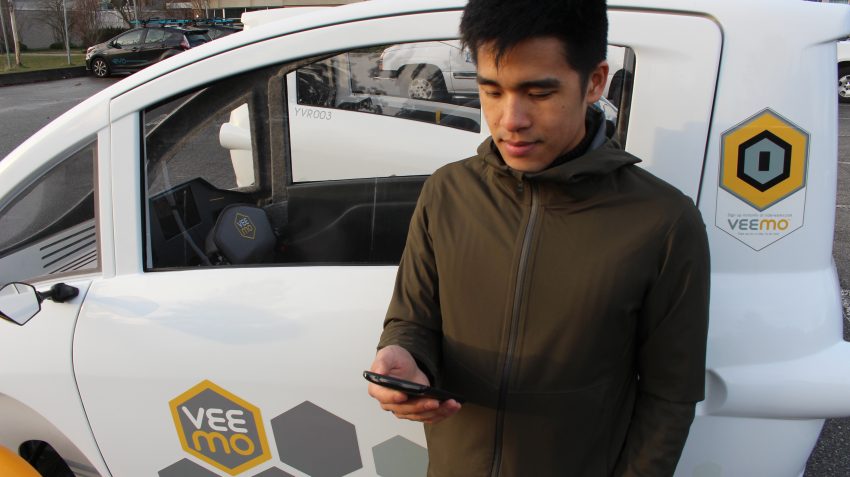
In the Photo: A user of VeloMetro’s Veemo App. Photo Credit: VeloMetro.
Do you think the same project could be applied in other cities?
KB: We see Veemo as a transportation solution for cities around the world. Urban transportation is an issue that cities and communities are actively looking to improve in the face of increasing density and congestion. Veemo has the potential to not only disrupt the first/last-mile transportation sector, but shift how people approach urban and active travel. While Veemo’s first market is Vancouver, we see the Seattle and Portland markets as the natural next steps, with other North American and international cities to follow.
RELATED ARTICLES:
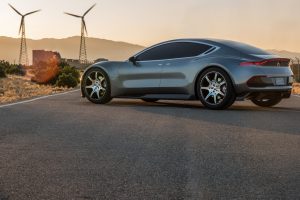 “HENRIK FISKER IS BACK: A CHAT ON THE EMOTION AND THE FUTURE OF THE CAR INDUSTRY” by Alessandro du Bessé
“HENRIK FISKER IS BACK: A CHAT ON THE EMOTION AND THE FUTURE OF THE CAR INDUSTRY” by Alessandro du Bessé
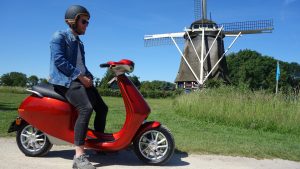 “BOLT MOBILITY’S APPSCOOTER: MAKING ELECTRIC MOBILITY MORE ACCESSIBLE AND SAFER” by Alessandro du Bessé
“BOLT MOBILITY’S APPSCOOTER: MAKING ELECTRIC MOBILITY MORE ACCESSIBLE AND SAFER” by Alessandro du Bessé
![]() “SONO MOTORS THE EUROPEAN STARTUP FOR ELECTRIC CARS” by Alessandro du Bessé
“SONO MOTORS THE EUROPEAN STARTUP FOR ELECTRIC CARS” by Alessandro du Bessé
What is your opinion regarding sustainable mobility in future cities? What role your company could potentially play?
KB: Urban mobility is a changing landscape. Cities are becoming more environmentally aware, with the aim to become more active and sustainable. Veemo and VeloMetro Mobility can act as a facet of this shift towards becoming a “green city”.
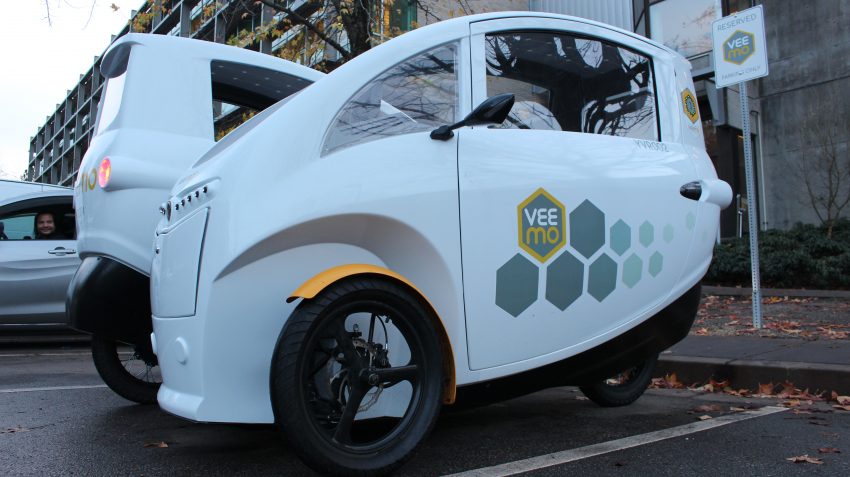
In the Photo: The Veemo parked. Photo Credit: VeloMetro.
Do you have plans in the future for other – similar or quite different – vehicles?
KB: We certainly intend to release other vehicles based on local market need or for specific applications. For example, we have just signed an MoU with an Indian partner to localize our technology for the SAARC region. We may also modify the design for hotter or colder climates.
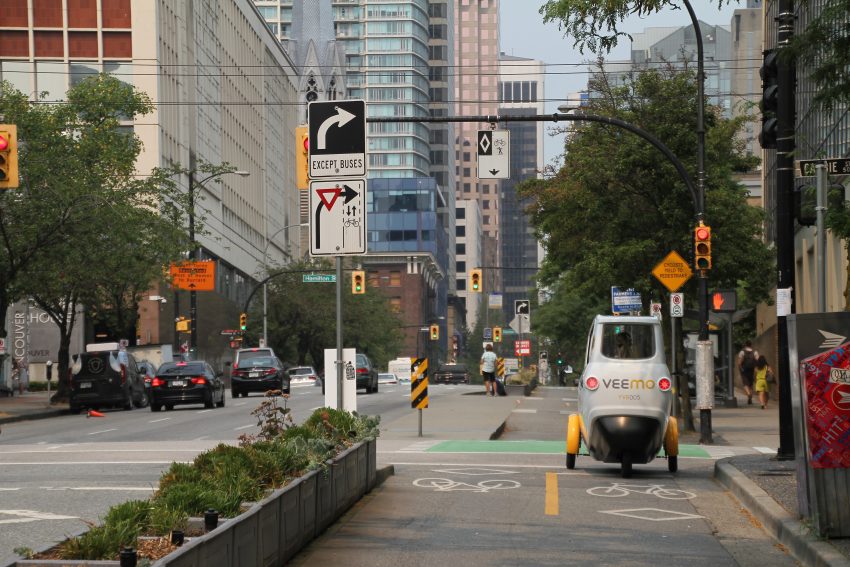



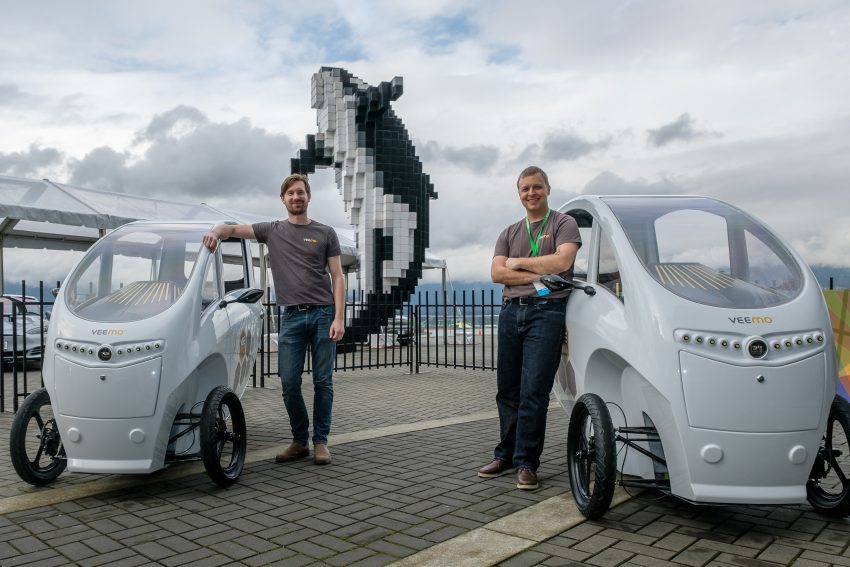 In the Photo: A couple of VeloMetro’s Veemos. Photo Credit:
In the Photo: A couple of VeloMetro’s Veemos. Photo Credit: 





